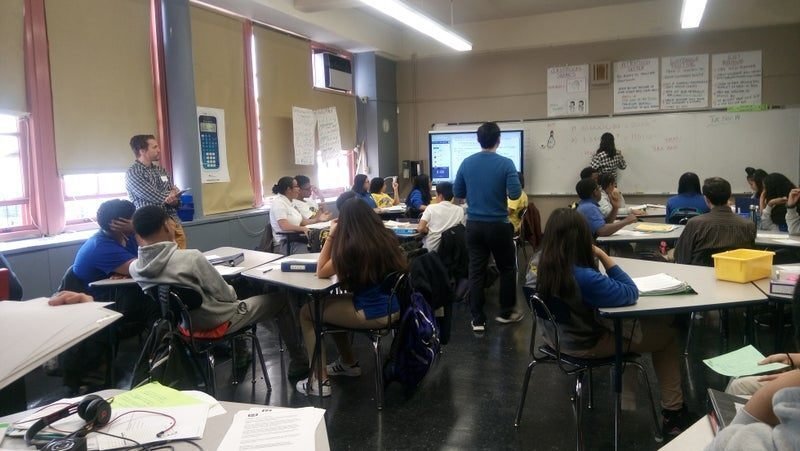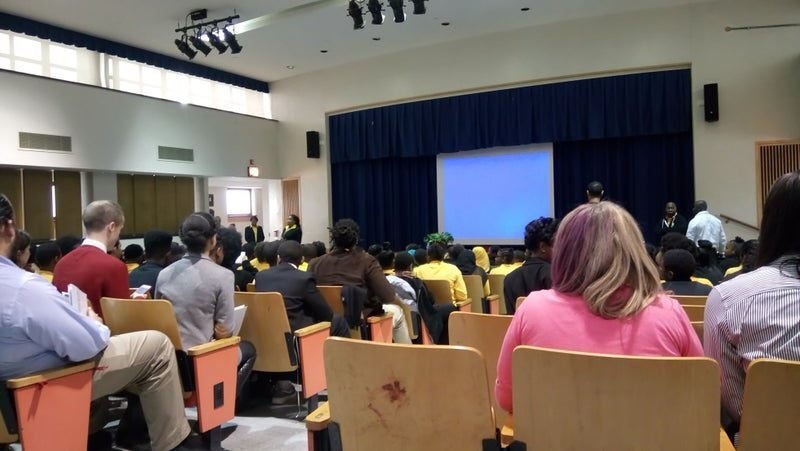
Showcase Schools Visit (CPS&CRP) -「有望実践」の学校公開に参加-
This and last month, I participated in two Showcase Schools visits!
今回は、先月と今月に参加しましたShowcase Schoolsという学校訪問の紹介です!
(Past Post: NewarkのNPOでのIntern)
1. What is Showcase Schools?
この取組はNYCの教育局(Department of Education)が、Promising Practices(学び続けるために敢えてBest Practicesとは言わないようにしているそうです)を教育関係者に発信しようということで2014年から始まりました。
今では35中33の学区で72の学校が参加しており、学校が自ら立候補して政府の審査を経て決まるそうです。
参加者はこれまでの経験だと教職員やDOEの方が8割、たまに保護者や私みたいな学生もいるというイメージです。
This Showcase Schools Visits is organized by NYC DOE to disseminate "Promising" (not "Best" because they acknowledge the need to continuously improve) Practices to educators etc. Since 2014, 72 schools in 33 out of 33 districts have participated through self-recommendation and then selection. Most of the participants are teachers and administrators, with few parents and grad students like e.
2. Collaborative Problem Solving
私が初めに参加したのはこちらのHamilton Grande Middle SchoolというCity Collegeのすぐ近くにある中学校。
テーマはSchool culture、中でもCollaborative Problem Solving (CPS)という問題行動の対処法についてでした。
Last month I visited Hamilton Grande Middle School near CUNY to learn about School culture in general and Collaborative Problem Solving (CPS) specifically.
これは簡単に言うと、問題行動に対して、「子供は正しい環境下では学べる」という哲学のもと、どのようなスキルが足りていないかを分析し、子供との対話からそれを引き出して共に解決に向かうという方法です。
以下のような分析プロセスを辿ります。
上のpacketには実際の会話のprotocolなんかもついています。
In a nutshell, CPS, with a philosophy that "kids do well if they can", entails analyzing problem behaviors through the lens of lagging skills, and eliciting responses from kids through supportive conversations. Below is a typical analytic process, and you can also find a protocol in the link above.
1. Challenging behaviors
↓
2. Problems to be solved
↓
3. Lagging skills
当日は2時間ほど校長その他の方から説明、グループワークを行った後、授業観察を15分×3コマ行いました。
その後、昼食を食べて今度は参加者で小グループに分かれて気付きについてのディスカッションを行いました。
First the principal and other educators gave a quick overview of this schools and their CPS practices, followed by a small group discussion. Then we conducted classroom observations (three times, 15 minutes for each) and debriefed thereafter.

3. Culturally Responsive Pedagogy
そして今月(2回目の訪問)は、BrooklynにあるRonald Edmonds Learning Center 2にCulturally Responsive Pedagogy (CRP)という、生徒の多様な文化的バックグランドに応えた学習環境を提供する取組を見てきました。日本ではあまり意識させられることがないので、これはとても新鮮でした!
And this month, I visited Ronald Edmonds Learning Center 2 in Brooklyn to know more about Culturally Responsive Pedagogy (CRP), which I think is not common in Japan.
まずCommunity Meetingという全校集会のようなものに参加したのですが、そこでLibationという、数人の生徒が植物に水をあげながら感謝の意を示したり、祈りを捧げたりします。
例えば1人の子は、「カリフォルニアの大火事の被害にあった方々にサポートが行き渡りますように」とお願いしていました。
他人の立場にたって自分事のように考える、その習慣が学校全体に行き渡っているなと感じました。
また何人かの子が次々にステージに出てきてダンスや歌などを披露しました。この年代でこういう場所に立つ機会は自分の頃はあまりなかったので、良い経験になることでしょう!
First we watched Community Meeting. One remarkable practice was Libation. 10+ students came in front of the stage and poured water into a bowl (where there is a plant), while showing gratitude or praying for support. For example, one student said "Wish those affected by widefire in California a support". This I think was reflective of their attitudes or considerations toward people from different backgrounds. After that dozens of students showed up in a stage to showcase their talents (e.g., dancing or singing).

そしてその後はImplicit Biasに関する議論で、参加者がそれぞれ「White」「Male」といった単語を聞いて連想する1語をchart paperに書いていきました。写真中央にあるのがそれです。
そして、CRPのためには教育者がknowledge brokerとしての役割を放棄して、facilitatorの役割を受け入れる必要があるという話が強調されました。
After going back to the initial room, we had a discussion on Implicit Bias, when each of us wrote down one word that we associate with such words as "White" "Male" (in the center of this picture below). Educators empasized that in order to put CRP into practice they need to relinquish their role as knowledge broker, and take on a facilitator role.

その後は同様に授業観察をして振り返り。
この学校では生徒の98%がlow incomeで、25%が仮設住宅に住んでいるそうです。
そこで問題になるのは、「Who's culture is it responsive to?(どの文化に学校環境を反応させていくのか?)」ということです。
例としては最後に校長先生と個人的に話したのですが、アジア人の子は成績を取ることに対する親からのpressureが非常に強いので、いかにその緩衝材になるかを意識しているという話をされていました。
まさに生徒個々人の背景にあわせて最良な教育手法を考えていかないといけない訳ですよね。
This discussion was followed by classroom observations and debrief. 98% of the students here is low-income, and 25% are living in temporary housing. Then the questions is; Who's culture is it responsive to?
For instance, I talked with the principal after the visit was over, and she said Asian students generally feel strong pressure from parents toward getting a high grade/test score, and they try to mitigate it. This is indicative of the need to respond to individual child's background as opposed to a school as a whole.
4. Resources
実は関連資料はネットで公開されているので、予定が合わなくて参加出来なかった取組も学ぶことが出来ます。こういった知の共有はとても大事ですよね。→here
ということで、どちらも1日がかりの訪問だったのですが非常に学びの多いものでした。
来年も多数参加予定なので、随時このブログで紹介していきたいと思います^-^
Fortunately all the resources are available here! I think this way of knowledge sharing is very powerful. I really learned a lot from these two visits, and I will continue to do so next year!!
(※本投稿は、2017年12月時点のものをリメイクしたものです。)
この記事が気に入ったらサポートをしてみませんか?
